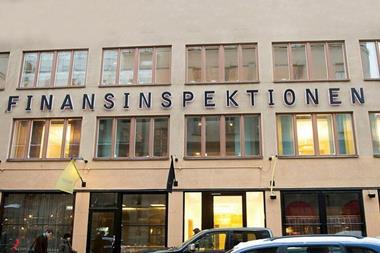A year ago, Rosen Consulting - working with
Deloitte - reviewed the changes that have
occurred in the property investment market since
the real estate downturn of the early 1990s. As economic recovery gets stronger, and global interest rates and inflationary pressures rise, Rosen Consulting has taken another look. Much has changed in the surrounding economic environment, but the maturity of property
as an investment class, which we highlighted a
year ago, has been proven out.
First, a bit of history. Ten or fifteen years ago, asset managers around the world viewed property as an ‘alternative investment’, one species of an exotic set of potential investments characterised by high risk, rollercoaster returns, and a large dose of heartache. Since then, structural changes in the property markets and their capital structure have transformed real estate into a separate investment class similar to traditional equity and debt. The impetus for property’s altered status comes from several sources, including: Strong performance
throughout the past ten years, especially as
compared to other asset classes; increased investor demand for yield-oriented investments; development of substantial securitisation in both the equity and debt wings of the property markets.
In 2003-04, historically low interest rates, low inflation rates, and the stable characteristics of property cash flows, defined a “sweet spot” for real estate investors, and drew a surge of yield-oriented capital into both the equity and debt segments of the property markets.
The increased investment sought a number of perceived benefits offered by real estate, such as:broad sources of capital, with increasing cross-border investment flows to both equity and debt; growing recognition that real estate was performing more like an investment commodity than like a “gadget” investment class; more sophisticated use of capital markets techniques to more clearly identify, and more appropriately price, risk; increased transparency and liquidity
as securitisation of both equity and debt reach historic levels.
As 2005 begins, the landscape has changed. Interest rates are rising, and virtually all forecasters agree that they will continue to rise throughout the next couple of years. At the same time, sluggish employment growth has moderated demand for property in many sectors, and rental rates in many areas have remained significantly lower than early 21st century levels. Thus we look forward to sluggish property performance and rising
interest rates during the next two years. And we
wonder what impact this is having on investment in
property.
Several important structural issues that we identified last year continue to guide the investment outlook, even as the macro economic matrix changes. Among them are:
The end of low interest rates as the lubricant for good transactions, and the savior of weak deals. As interest rates rise, we expect investors in the short term to move aggressively to lock in interest rates at near historic lows. It is still possible to use capital markets techniques
to buy upside protection against rising rates, but
the window of opportunity is closing.
We expect, within a year, that higher interest rates
will be a factor in everyday property investment decisions.
On the investment front, rising interest rates
imply rising yields in other asset classes, and with
property fundamentals still recovering slowly, the
yield advantage in real estate will diminish. This
should slow some of the capital surge into the property sector, and result in moderation in capitalisation rates.
The weakening dollar will attract in-bound investment
into US property markets. The dollar has
declined dramatically versus the euro and several other
countries in the past year, and continues to show weakness
in international markets. Although Japan and
China have so far been relatively unaffected by currency
alignment, it is highly likely that they, too, will
see a strengthening of their currencies vis-à-vis the dollar.
In this environment, US property appears ‘cheap’,
a perception which will be reinforced as capitalization
rates drift upward. We therefore expect much stronger
offshore interest in US property markets –both equity
and debt –over the next two years. To some extent, this
inflow of capital will replace the diminished flow from
domestic yield-driven investors, and should support
property values as fundamentals improve.
Property fundamentals will improve, and returns will
stabilize. Even in the most challenged markets, such as
technology-dominated suburban office locations, fundamentals
have stabilized during 2004. In other areas,
such as retail property and hotels, market fundamentals
and property performance have turned the corner. As
we expect the US economy to continue its current
moderate growth track, real estate fundamentals
should improve on a broader basis in 2005-6. We
therefore expect that rising interest rates will be offset
by rising incomes in most instances, and that there will
be little increase in the rate of distress for investment
property. As real estate demonstrates, as an asset class,
that is has weathered a full cycle without the foreclosures
and bankruptcies which characterized past downturns,
institutional capital flows should increase even
further, supporting property prices and keeping returns
stable.
New investment strategies will come to the fore.
The altered investment environment will lead to
emphasis on different strategies. Direct equity
investors seeking value-added or opportunistic
returns, for example, will focus on redevelopment
and re-positioning strategies, rather than on low-cost
acquisition or low-cost financing. We expect the
trend to convert excess office supply to other uses,
which has been gaining momentum in some older
cities, to spread to suburban districts – especially in
places where oversupplied research and development
sites can be re-invented as multifamily housing. We
also expect rising interest rates to moderate the
demand for home ownership –both as freestanding
houses, and as condominium units. This should have
several effects, including jump-starting an improvement
in rented housing fundamentals, and moderating
the frenzy surrounding the purchase of multifamily
complexes suitable for conversion to condominium.
In short, we see rented housing as a winner
in the next couple of years.
Investors in equities, on the other hand, are faced
with a complex and confusing market. REIT stock
prices are at all-time highs, with four consecutive years
of out-performing the broader US stock indices. The
multiple for the REIT sector (stock price divided by
Adjusted Funds From Operations) was, as 2005 began,
actually higher than the price/earnings ratio of the S&P
500. This does not make sense, and a re-balancing is in
the offing. Numerous investors are beginning to hedge
their property investments through programs of selling
short on REIT stocks, expecting the profits as REIT
prices decline to offset the value losses their portfolios
may experience as capitalisation rates rise throughout
the sector. The ability of sophisticated investors to use
capital markets techniques in the property asset class
is, of course, quite new. It relies on the development
since 1990 of broad and liquid real estate equity and
debt public markets. And it is now, as the underlying
economics governing real estate investment change,
allowing investors for the first time to confidently
remain in real estate and participate in opportunities at
all points in the cycle. Thus some investors use publicly
traded REITs (or REIT indices, which are now liquid
and tradable) to hedge their long positions in either
public or private equity real estate. Others shift among
the various traunches of CMBS offerings to match risk
and yield requirements. And still others use interest
rate or Treasury futures to moderate the effects of rising
debt costs on their investment portfolios.
None of this was available to property investors fifteen
years ago. In the old real estate world, changes in
interest rates or market fundamentals had uncushioned
impact on property performance and values. There
were few buffers available when conditions turned,
and the “boom-and-bust” real estate cycle was the
main result. This time is a bit different. It’s not that the
economy or the market fundamentals are different, or
that there are no excesses in the market –recent moves
in housing and condominium prices, and parallel drops
in multifamily capitalisation rates are probably not sustainable.
Other disconnects between fundamentals and
pricing can be seen in many areas of the market. But
the tools investors can employ to manage changing
conditions are different. And the result will be a much
less volatile property sector as the interest rate environment
changes over the next few years.
All of this leads us to believe that the property markets
have, indeed, come of age as a core asset class.
With populations throughout the developed world
aging and current income requirements growing
within the institutional community, this newfound
maturity in the real estate sector has come at the right
time. The features which have made property investment
attractive over the long term - relatively high
yields, cash flow stability, a high proportion of total
return coming from cash flow - have been joined by a
new set of characteristics which enhance the asset
class’ suitability for institutional portfolios. The
greater transparency and increased liquidity coming
from growing public markets, and the existence of
capital markets techniques previously unavailable in
the property sector, are reducing the volatility and
lowering the risk profile in the entire sector. The
result is an environment that should support enhanced
returns.
For the immediate future, we expect to see:
■increasing capital flows into real estate, moderating
the rise in capitalisation rates expected as borrowing
costs increase;
■rising cross-border investment, with yield and currency
considerations making US property an increasingly
attractive alternative for global investors;
■most commercial lending to continue in CMBS format;
lending volumes remain strong as loan rollover
requirements drive demand;
■underwriting to remain conservative, and default
rates to remain low; public equity markets to correct
and return to multiples more in line with historic
trends; and, the growth of debt and equity hedging
techniques from “new concept” to accepted tools for institutional property investment.
Arthur Margon is a principal at Rosen
Consulting












No comments yet